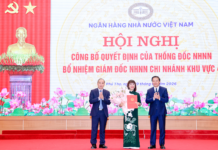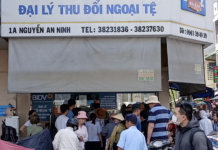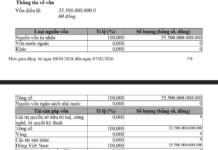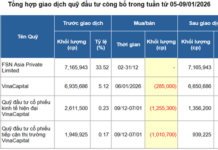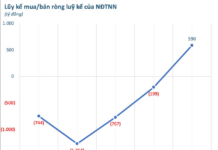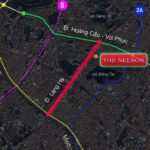In July 2023, the Ministry of Transport (now the Ministry of Construction) collaborated with the Hanoi People’s Committee to commence the Duong River Waterway Upgrade Project. The project includes a railway bridge and a road bridge, replacing the existing Duong Bridge (built in 1902) which has deteriorated over time.
The project is located in Thuong Thanh and Duc Giang wards, Long Bien District, and Yen Vien Town, Gia Lam District (Hanoi), now known as Viet Hung Ward and Phu Dong Commune.
With a total investment of over 1.8 trillion VND, the project is managed by the Railway Project Management Board under the Ministry of Construction.
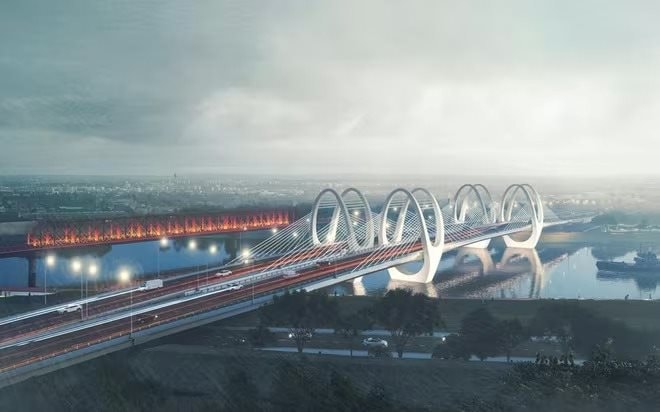
Previously, the architectural design named “Giao Duyen,” executed by the consortium of Large Bridge and Tunnel Design Consulting JSC and Transport Construction Investment and Consulting JSC, was selected after winning the design competition.
The railway bridge is being constructed by a consortium comprising Railway Construction Corporation (RCC), Construction Investment and Development JSC 3, and Ha Hai Railway JSC.
The road bridge across the Duong River is being built by a consortium of Dat Phuong Group JSC, Bridge 14 JSC, and Nam Anh Construction Equipment Co., Ltd.
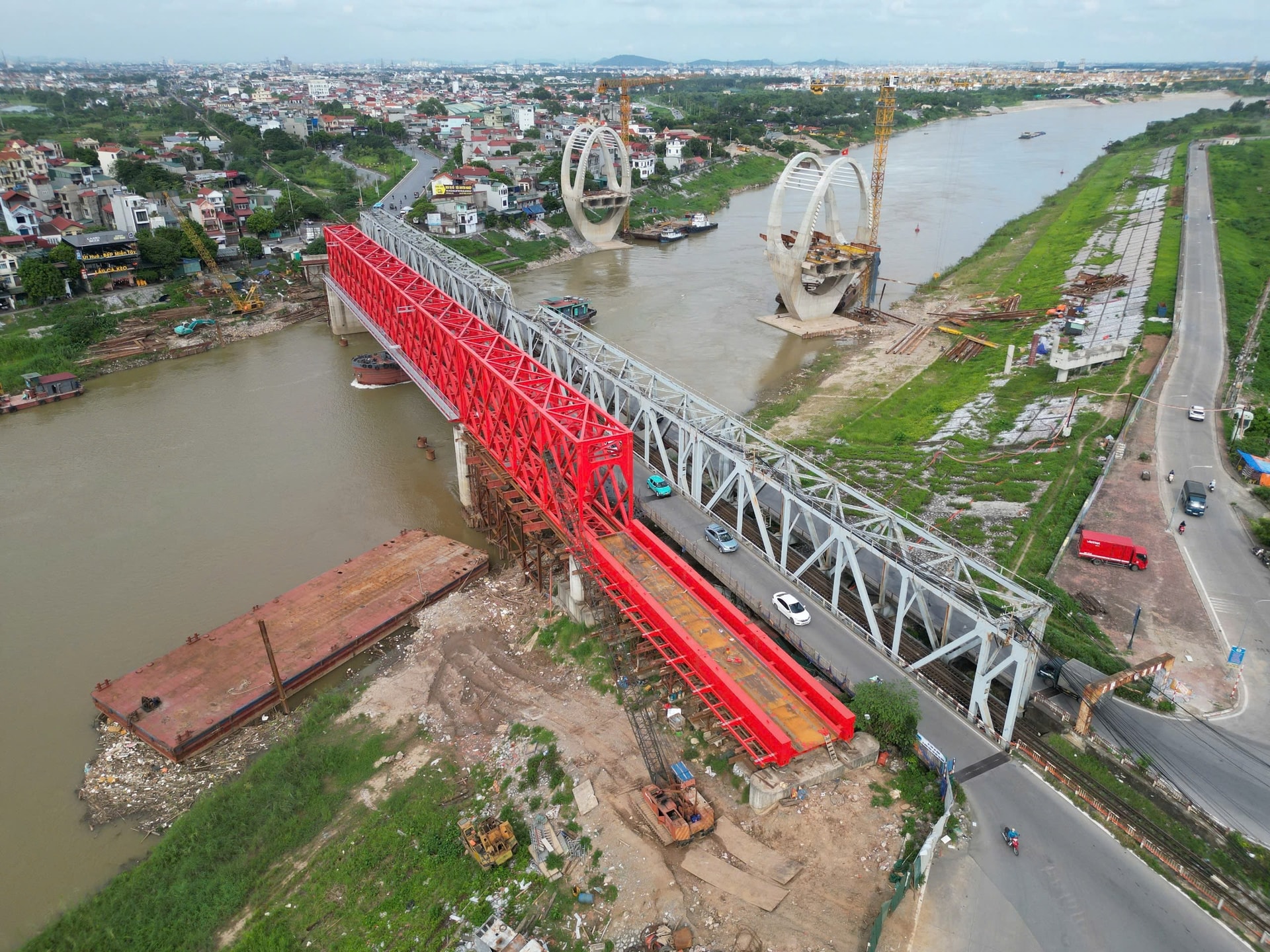
After more than two years of construction, several components have begun to take shape.
According to the plan, by October, at least 60% of the land will be handed over, with the remaining portion to be delivered by the end of 2025 for the project’s implementation.
Due to an 8-month delay in land handover, the project’s completion is expected to be postponed to next year instead of 2025 as initially planned. The Railway Project Management Board is currently preparing a report for the Ministry of Construction to adjust the project timeline to December 2026.
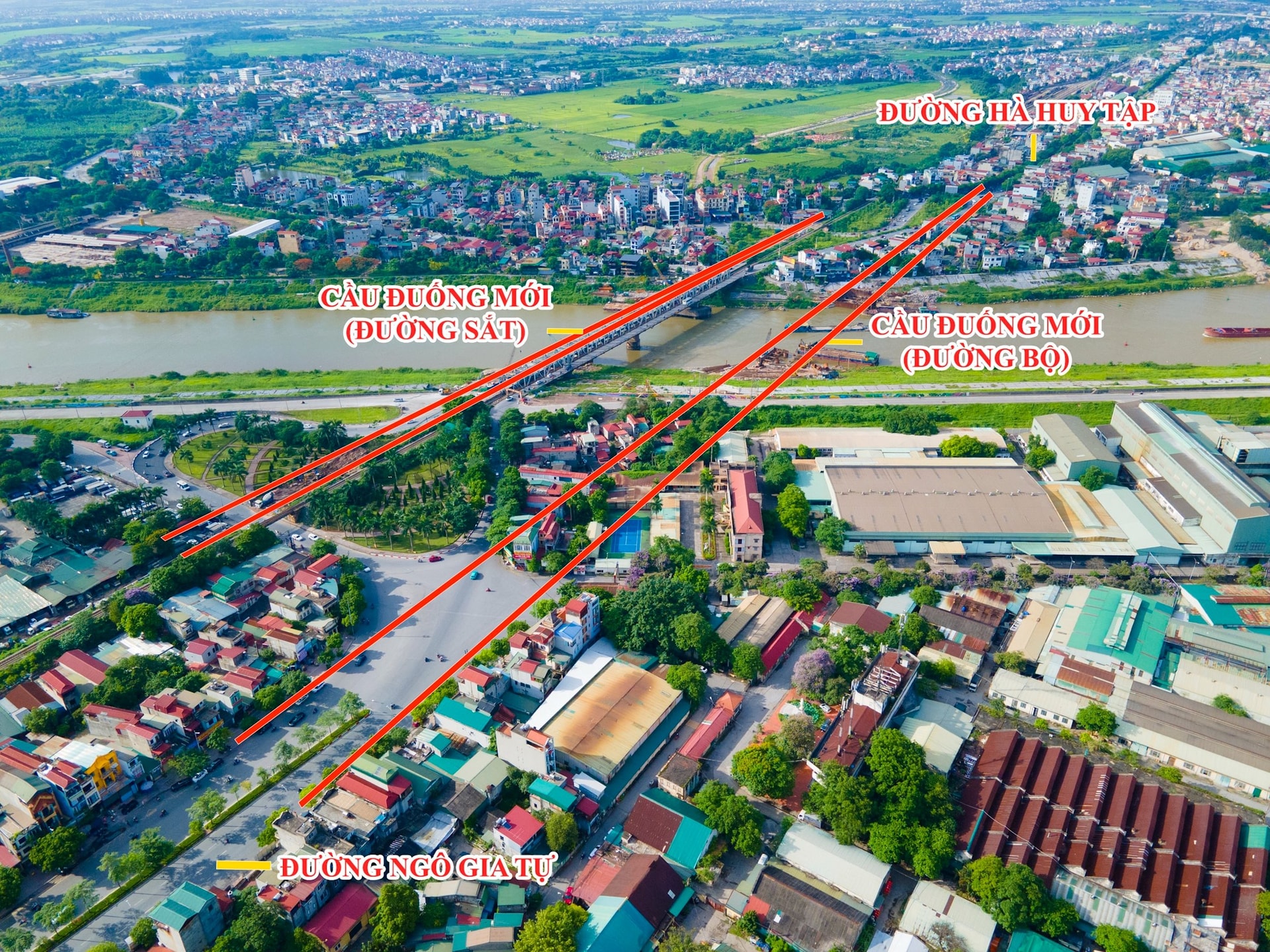
The road bridge and its approach roads span a total length of 700 meters, located approximately 100 meters downstream from the existing Duong Bridge.
The road bridge itself is 382 meters long, constructed permanently with reinforced concrete and a cable-stayed system. Initially, a single unit will be built according to the plan, with the approach road 16 meters wide and the main bridge 18.5 meters wide; the clearance under the bridge is 4.75 meters.
The approach roads, totaling 318 meters, will initially accommodate four lanes, meeting urban arterial road standards with a design speed of 80 km/h. In the final phase, the road will be expanded to six lanes for motor vehicles and two lanes for mixed traffic.
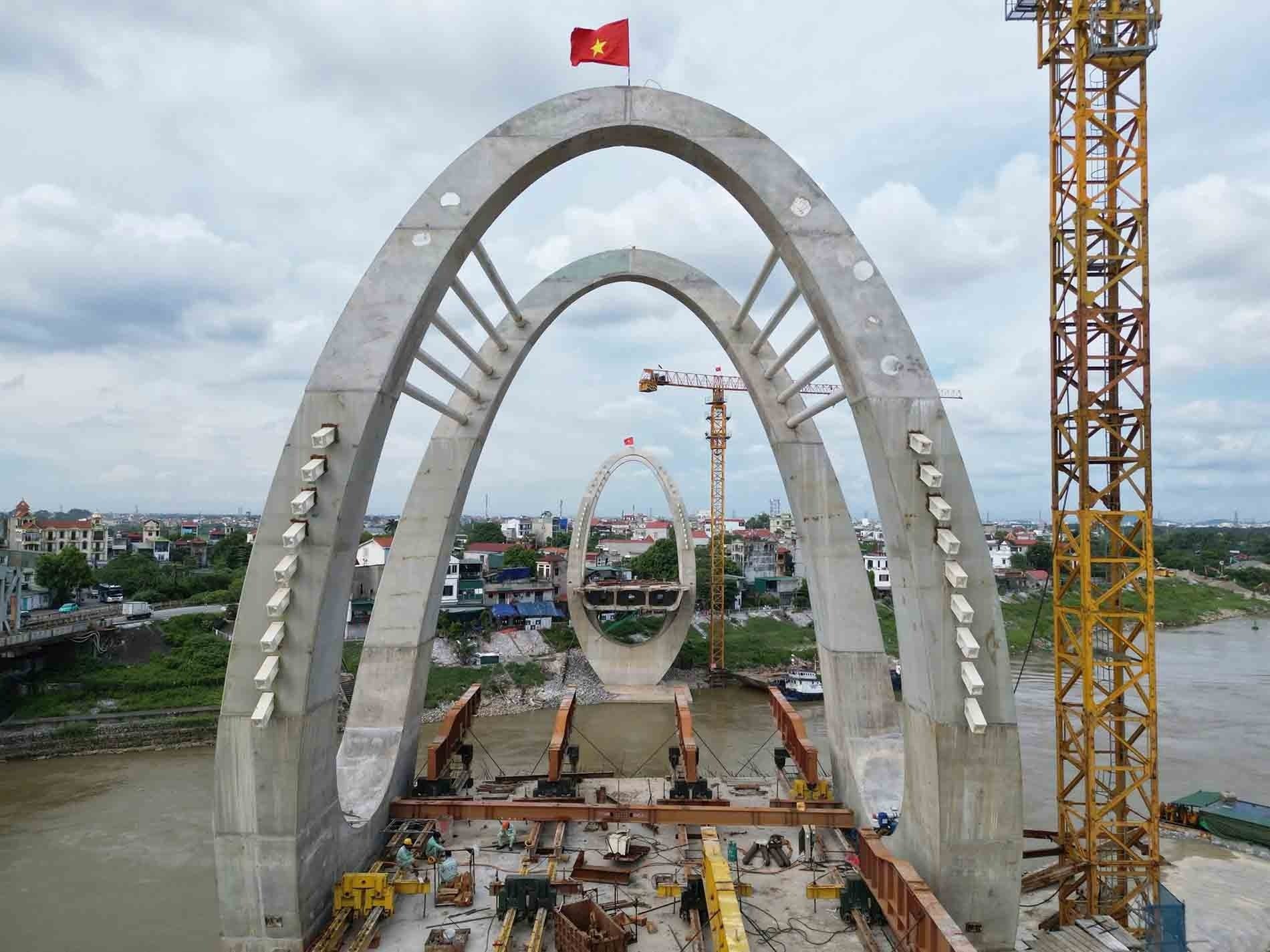
Currently, the contractor is working on the T3 and T4 pillars in the river and awaiting land clearance to begin onshore construction.
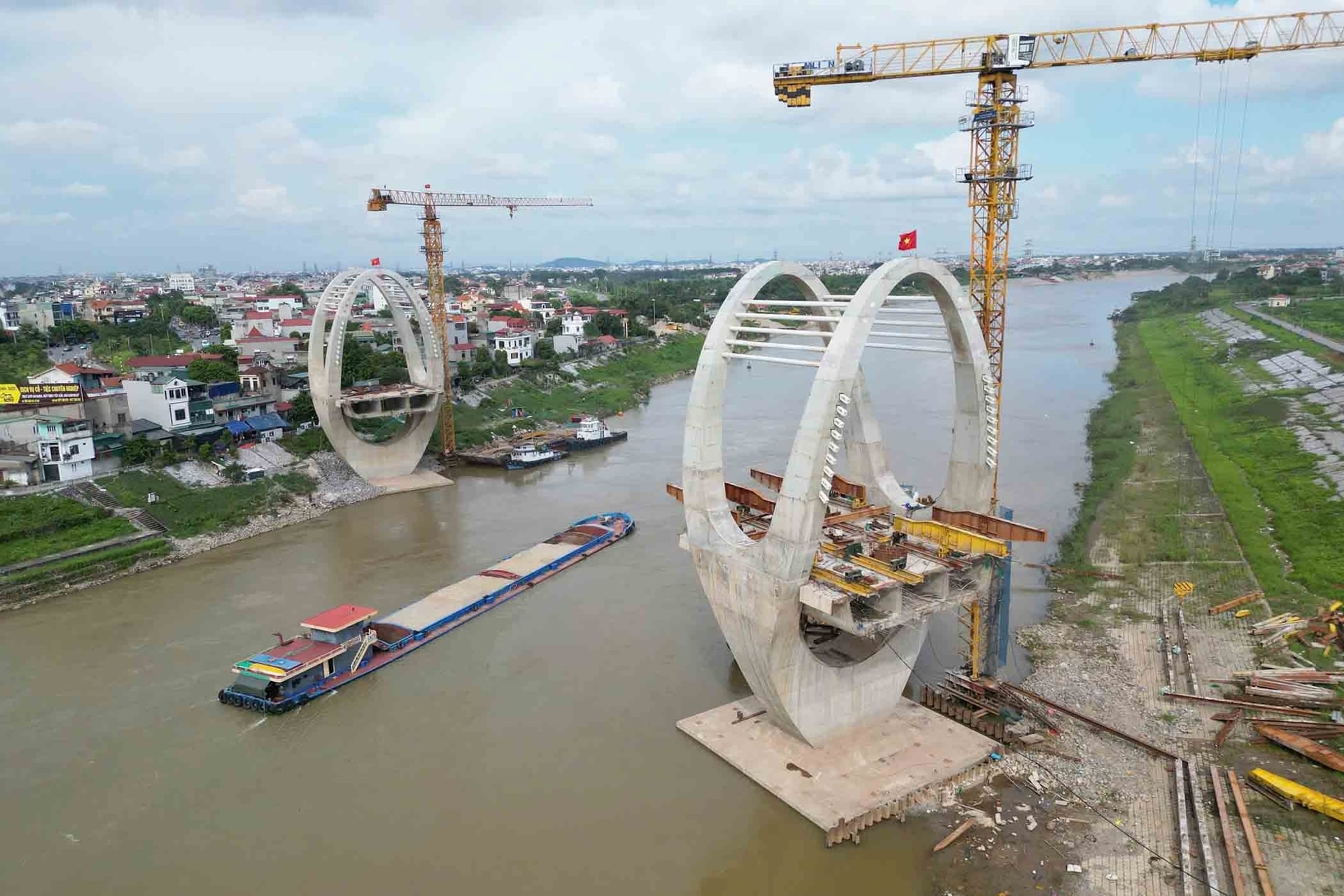
For the railway bridge, the contractor has installed two main girders and temporarily halted construction from May to October to comply with Dyke Law regulations during the rainy season. Auxiliary girders will be installed starting in November.
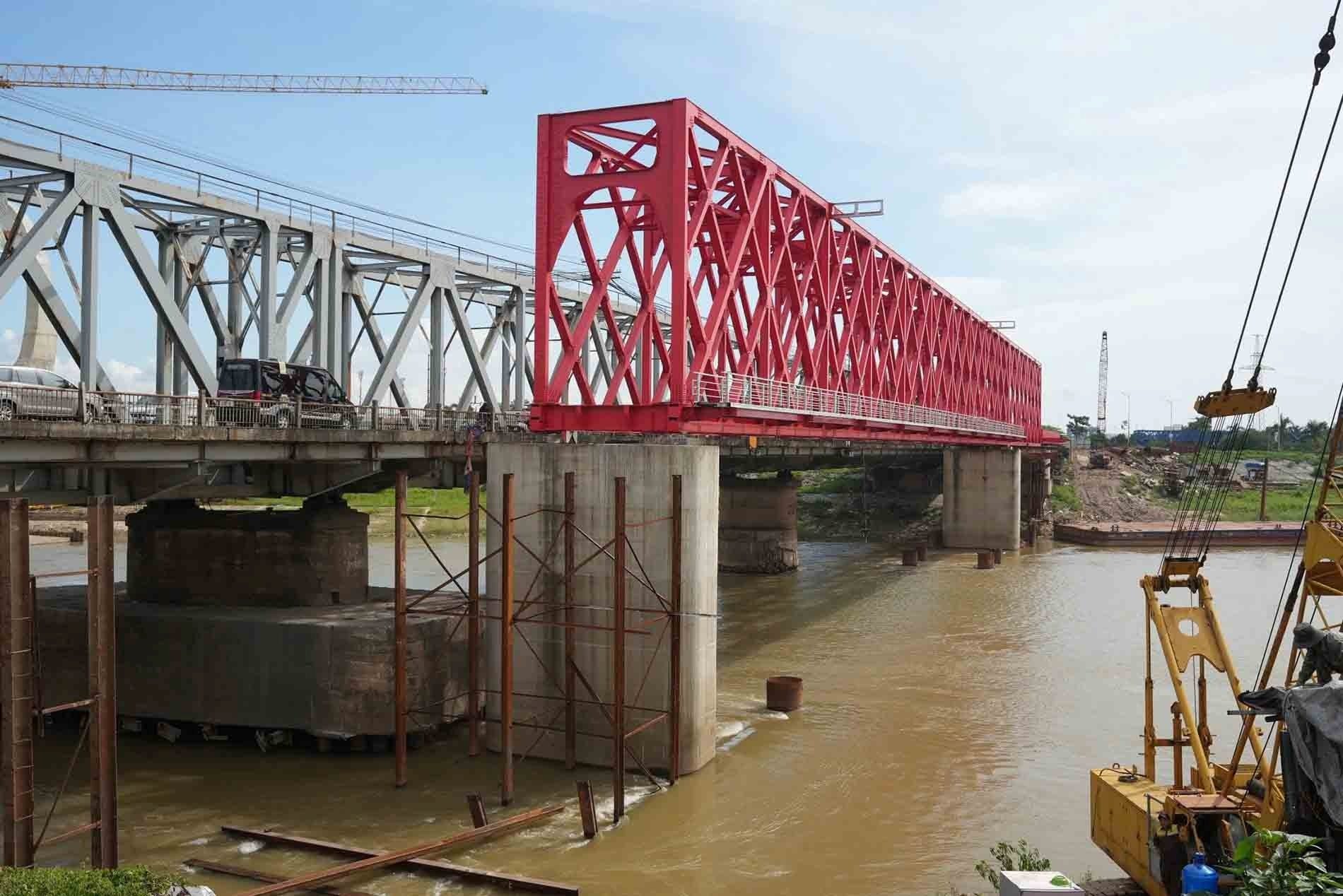
The progress of the railway bridge depends on the completion of the road bridge. Once the road bridge is operational, the existing railway bridge will be dismantled and relocated to the new structure.
Upon completion of both the road and railway bridges across the Duong River, the current Duong Bridge will be demolished, eliminating a bottleneck on the vital waterway connecting Viet Tri to seaports in Quang Ninh and Hai Phong.
Built by the French in 1902, the Duong Bridge serves both National Highway 1 and the Hanoi – Dong Dang railway line.
After the war, the bridge was reconstructed but has since become outdated and deteriorated, requiring frequent repairs that cause congestion on the Northern Delta’s Waterway No. 1.
This 250-kilometer waterway, stretching from Quang Ninh through the Duong River to Viet Tri Port on the Lo River, has been upgraded to primarily accommodate vessels up to 800 tons.
However, the Duong Bridge’s clearance is only 2.8 meters at high tide, with a navigation width of just 26 meters. As a result, vessels up to 600 tons and container barges carrying 24 TEU (stacked only two layers high) can only pass during low tide.
Billion-Dollar Super Infrastructure Lands: Hanoi’s Core Central Real Estate Surges Ahead
A wave of major infrastructure projects is transforming connectivity in Hanoi’s core, making rare real estate offerings like The Nelson even more desirable.
West Lake West Real Estate Booms Thanks to Rare Feng Shui Location
Nestled along the auspicious axis of Ba Vì – West Lake, Jade Square embodies the pinnacle of luxury living in Hanoi’s elite circles. Its prime location, steeped in feng shui principles, harnesses the prosperous energy of this golden coordinate, elevating it to a symbol of sophistication and prestige in the West Lake area.
Chinese Conglomerate Eyes Key Vietnamese Projects: Minister of Construction Responds
Minister Trần Hồng Minh expressed confidence in the corporation’s ability to expand its collaboration and investment in Vietnam’s key infrastructure projects.






